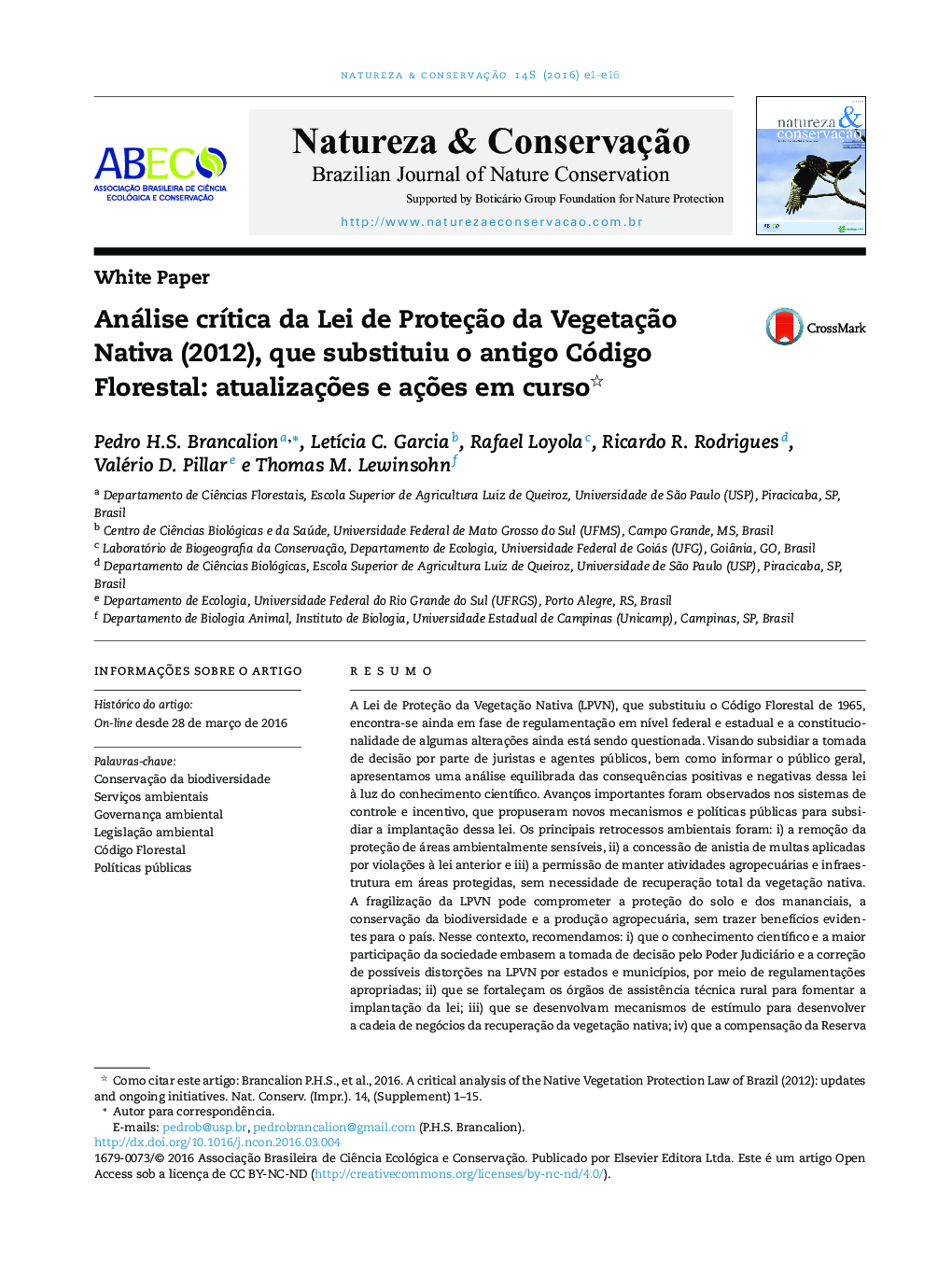| کد مقاله | کد نشریه | سال انتشار | مقاله انگلیسی | نسخه تمام متن |
|---|---|---|---|---|
| 4400863 | 1307026 | 2016 | 16 صفحه PDF | دانلود رایگان |

ResumoA Lei de Proteção da Vegetação Nativa (LPVN), que substituiu o Código Florestal de 1965, encontra‐se ainda em fase de regulamentação em nível federal e estadual e a constitucionalidade de algumas alterações ainda está sendo questionada. Visando subsidiar a tomada de decisão por parte de juristas e agentes públicos, bem como informar o público geral, apresentamos uma análise equilibrada das consequências positivas e negativas dessa lei à luz do conhecimento científico. Avanços importantes foram observados nos sistemas de controle e incentivo, que propuseram novos mecanismos e políticas públicas para subsidiar a implantação dessa lei. Os principais retrocessos ambientais foram: i) a remoção da proteção de áreas ambientalmente sensíveis, ii) a concessão de anistia de multas aplicadas por violações à lei anterior e iii) a permissão de manter atividades agropecuárias e infraestrutura em áreas protegidas, sem necessidade de recuperação total da vegetação nativa. A fragilização da LPVN pode comprometer a proteção do solo e dos mananciais, a conservação da biodiversidade e a produção agropecuária, sem trazer benefícios evidentes para o país. Nesse contexto, recomendamos: i) que o conhecimento científico e a maior participação da sociedade embasem a tomada de decisão pelo Poder Judiciário e a correção de possíveis distorções na LPVN por estados e municípios, por meio de regulamentações apropriadas; ii) que se fortaleçam os órgãos de assistência técnica rural para fomentar a implantação da lei; iii) que se desenvolvam mecanismos de estímulo para desenvolver a cadeia de negócios da recuperação da vegetação nativa; iv) que a compensação da Reserva Legal se atente a critérios ambientais para seu planejamento; e que v) o cumprimento das demandas da lei seja aferido também com base na qualidade da vegetação que é recuperada.
The Native Vegetation Protection Law (NVPL) of Brazil, which replaced the Forest Code from 1965, is still undergoing regulation at federal and state levels, and the constitutionality of some clauses are still in question. In order to support legal rulings, decisions by public officers, and to inform other stakeholders, we present a balanced assessment of the positive and negative consequences of NVPL in light of current scientific knowledge. Key advances were noted in the systems of controls and incentives, which promoted new mechanisms and policies to support the implementation of this law. The main environmental setbacks were i) the removal of protection of certain environmentally fragile areas, ii) the concession of amnesty of fines incurred for violating the preceding legislation, iii) allowing continuous farming or maintenance of infrastructure in areas protected by law, without full recovery native vegetation. The weakening of NVPL may hamper soil and watershed protection, biodiversity conservation, and even agricultural productivity, without manifest benefits for the country. On that account, we recommend: i) that judiciary rulings and state and county regulations to correct pending issues with the NVPL based on scientific knowledge and with wider citizen participation; ii) the strengthening of agencies for rural technical assistance; iii) the development of incentives to develop the supply chain for native vegetation recovery; iv) the regulation of compensation for Legal Reserves based on clear and robust environmental criteria; and that v) that the assessment of legal compliance has also to be based on the environmental quality of recovered areas.
Journal: Natureza & Conservação - Volume 14, Supplement 1, April 2016, Pages e1–e16